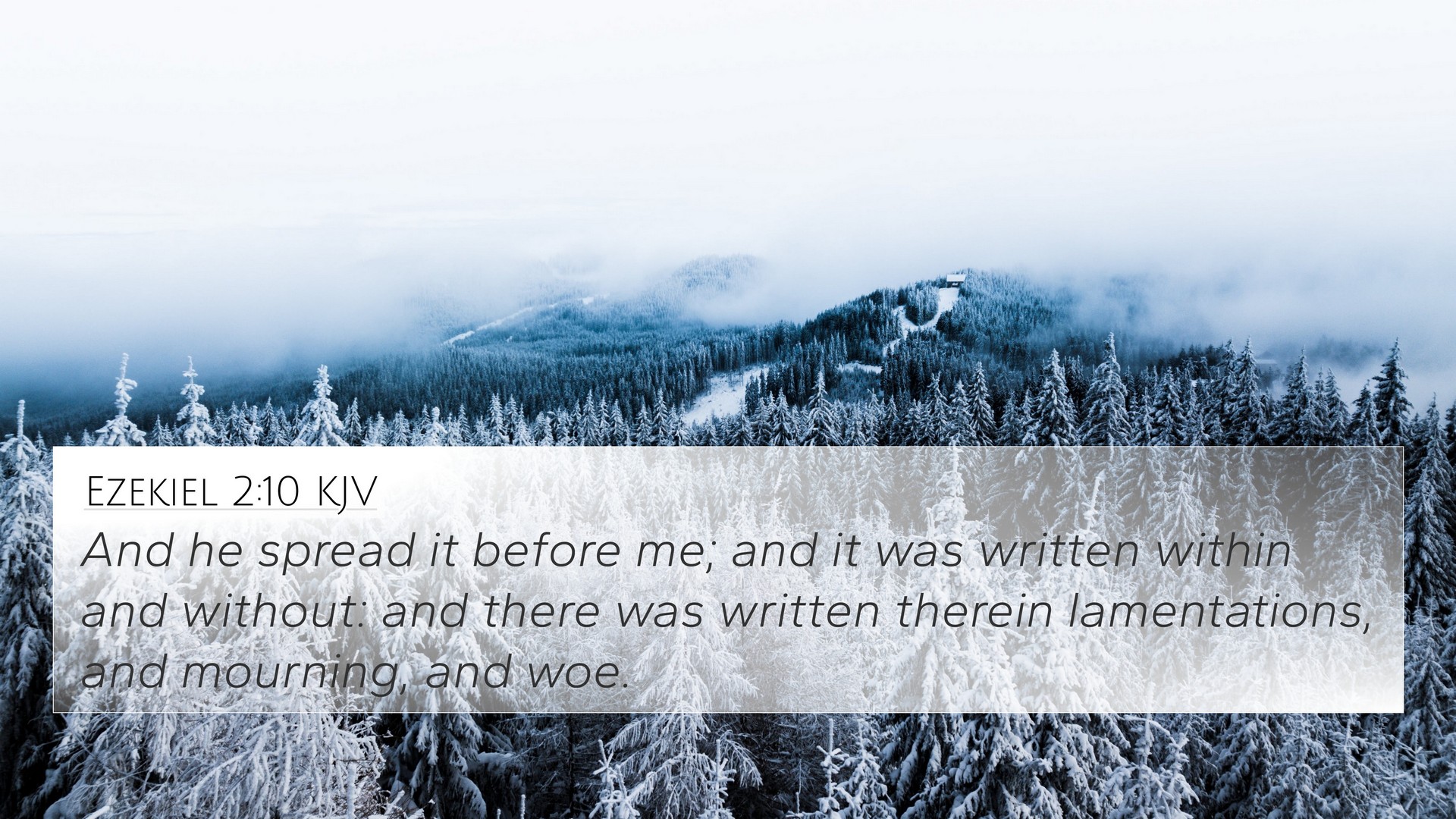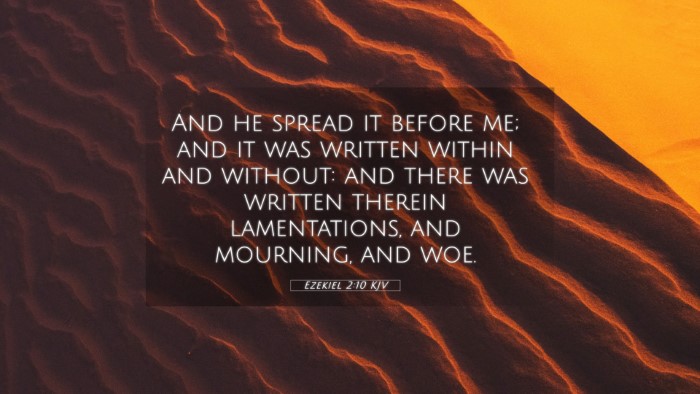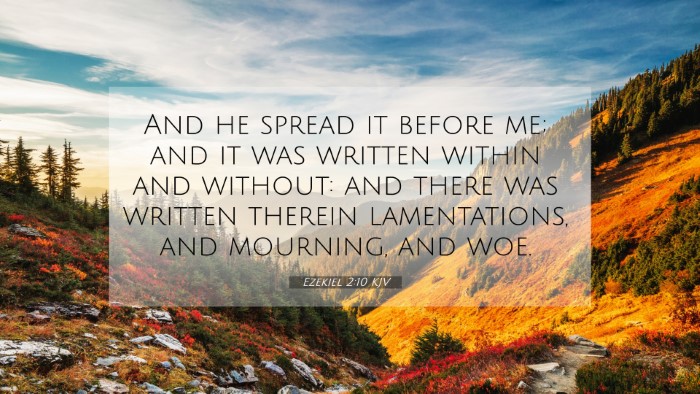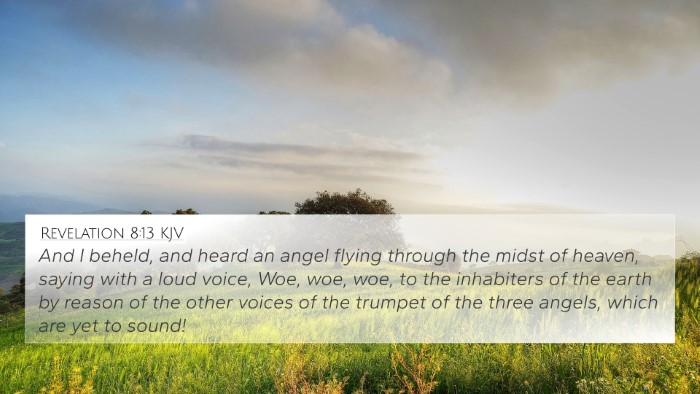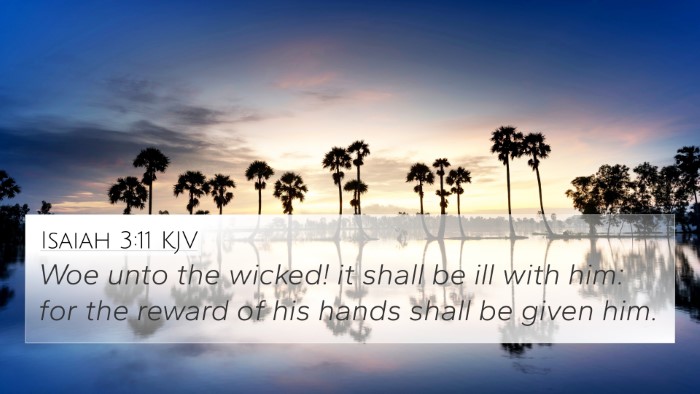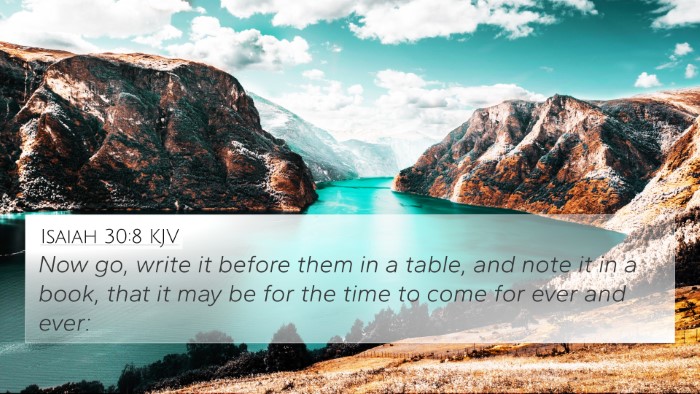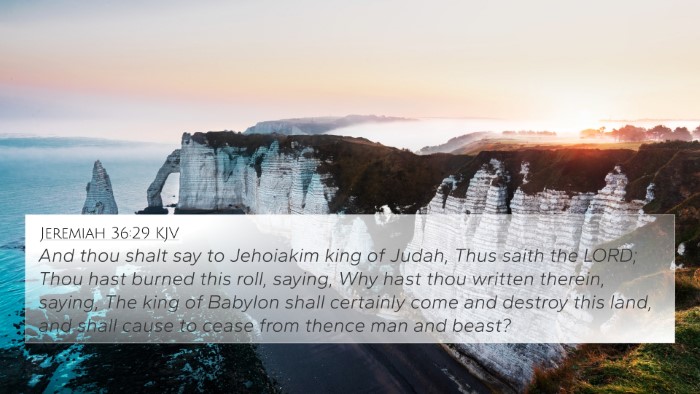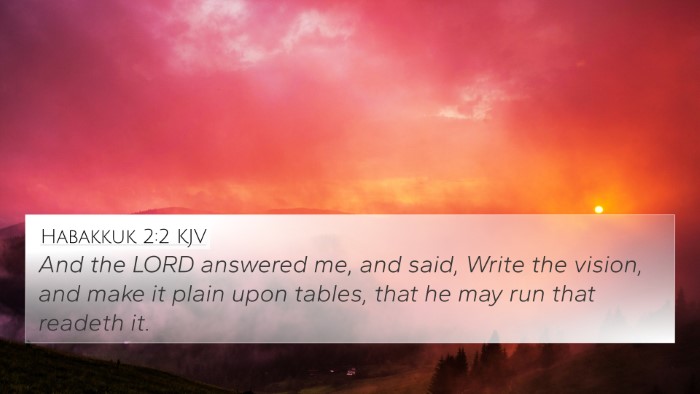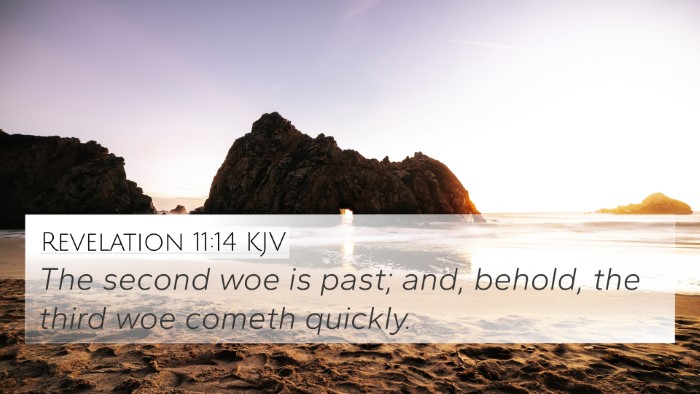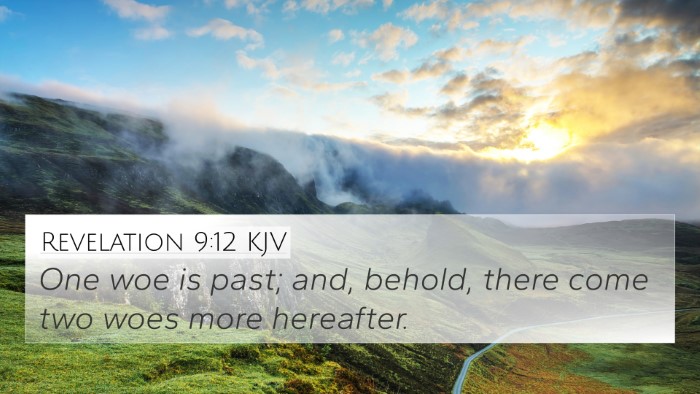Ezekiel 2:10 - Summary and Interpretation
Bible Verse: Ezekiel 2:10 "And he spread it before me; and it was written within and without: and there was written therein lamentations, and mourning, and woe."
Overview of Ezekiel 2:10
Ezekiel 2:10 depicts a powerful moment where the prophet Ezekiel is presented with a scroll containing dire prophecies. This scroll symbolizes the message from God that Ezekiel is mandated to deliver to the people of Israel. The content of the scroll—lamentations, mourning, and woe—establishes the themes of judgment and sorrow that permeate much of the prophetic literature.
Commentary Insights
This verse is significant in understanding the overall purpose and mission of Ezekiel as a prophet. The following insights are drawn from public domain commentaries:
Matthew Henry's Commentary
Matthew Henry emphasizes that the scroll symbolizes the judgment that God is declaring to His people. The lamentations, mourning, and woe signify the serious state of the nation of Israel and the consequences of their rebellion against God's laws. Henry highlights that the written judgment serves as a warning and an indication of the severe consequences that follow disobedience.
Albert Barnes' Commentary
Albert Barnes focuses on the nature of the scroll. He points out that being written "within and without" signifies the fullness of the message; it is comprehensive and cannot be ignored. The contents reflect the gravity of the message Ezekiel must communicate—a call for repentance accompanied by a warning about the impending destruction if they remain unrepentant. Barnes further links this to the themes of God's holiness and justice.
Adam Clarke's Commentary
Adam Clarke explores the emotional weight of the message contained within the scroll. He posits that the lamentations signify regret and sorrow, reflecting God's sorrow over Israel’s sins. Clarke notes the urgency with which Ezekiel is to deliver these messages, indicating that the fate of Israel hangs upon their response to this prophetic declaration. He also draws parallels with other prophetic texts that convey similar themes of judgment and hope.
Thematic Connections and Cross-References
The exploration of Ezekiel 2:10 reveals several thematic connections across scripture:
- Jeremiah 9:1: A lament over the nation’s apostasy and God’s heart towards His people.
- Lamentations 1:1-2: Expresses deep sorrow over the destruction of Jerusalem, resonating with the themes in Ezekiel.
- Isaiah 30:27-28: The imagery of judgment and lamentation parallels the prophetic tones in Ezekiel.
- Revelation 18:10: The woe pronounced on fallen Babylon can be compared to the woe that Ezekiel proclaims over Israel.
- Ezekiel 3:14: Corresponding to Ezekiel’s internal turmoil as he internalizes the messages of lamentation.
- Micah 1:8-9: The prophecy of woe and the lamentation of the people echoing similar prophecies.
- Matthew 23:37: Jesus expresses lament over Jerusalem, linking to the emotional content of Ezekiel's message.
Tools for Bible Cross-Referencing
Understanding Ezekiel 2:10 can be enhanced through various tools and methods:
- Utilize a Bible concordance for finding related verses quickly.
- Engage in cross-reference Bible study to draw deeper connections.
- Explore Bible cross-reference guides for thematic studies across books.
- Employ comprehensive Bible cross-reference materials for an extensive analysis.
How to Use Bible Cross-References
To effectively find connections between Bible verses, one can:
- Identify similar themes, such as lamentations and judgment, across the texts.
- Use cross-reference systems available in most study Bibles.
- Look into Bible chain references that connect verses conceptually.
- Seek guidance from Bible study resources that outline inter-Biblical dialogue.
Understanding Cross-Referenced Themes
Through the study of cross-references, one can uncover how the messages of lament, judgment, and God’s call for repentance resonate across the entire Biblical narrative. For example:
- Identifying connections between Old and New Testament: Ezekiel’s lamentations find their culmination in the New Testament through Jesus’ mourning over Jerusalem.
- Diving into detailed cross-reference between Gospels: Recognizing parallels between Ezekiel's prophetic role and John the Baptist's call for repentance.
Conclusion
Ezekiel 2:10 serves as a profound example of the theme of lament and the serious warnings issued by God through His prophets. The message contained within the scroll compels both reflection and action, serving as a critical component to understanding the nature of God’s relationship with His people. By utilizing various cross-referencing tools and understanding the connections between biblical texts, one can gain deeper insight into his messages and implications for both ancient and contemporary faith communities.
